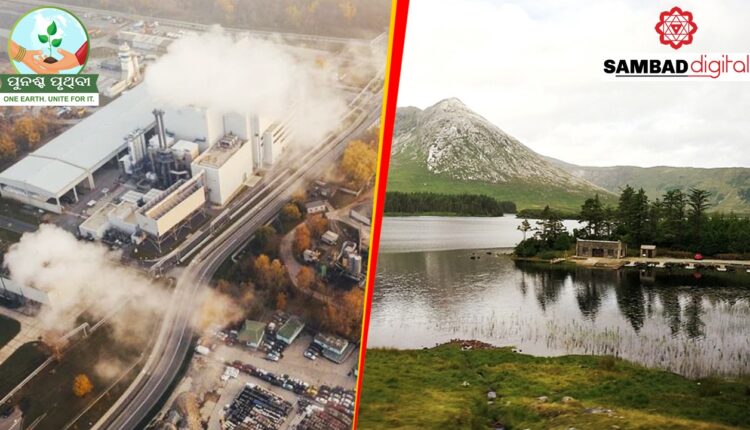Bhubaneswar: Global cities are key to overcoming the climate crisis, biodiversity loss and pollution. A new vision of future cities is detailed in a report released by the UN Environment Programme (UNEP) and the UN Human Settlements Programme (UN-Habitat).
The Global Environment Outlook for Cities report: Towards Green and Just Cities identifies urbanization as one of the main drivers of environmental change and calls for urgent action to achieve net-zero circular cities that are resilient, sustainable, inclusive, and just. Emphasizing the links between social and ecological calamities, the report lays out pathways to overcome the main social-political lock-ins that perpetuate both inequality and climate change.
“In the aftermath of COP26, we remain off track from the path to a sustainable future. The scale of the challenge means no single actor can fix this alone. To tackle climate change, nature loss, and pollution in cities, co-creation of greener and more equitable cities is an imperative for city leaders, urban planners, local communities, national institutions, scientists, the private sector and civil society,” said Joyce Msuya, Deputy Executive Director of UNEP.
Through a review of existing literature and multiple case studies, the report shows how environmental degradation affects the physical and mental health of people living in urban centres, particularly hurting women, children, and the elderly. To achieve effective and just solutions for particular contexts, the report calls for decision making and planning processes that are inclusive of those that are typically excluded.
“We urgently need to include more voices in meaningful and effective decision-making. While these green and equitable cities may not exist yet, we need strong leadership at the city scale and the right enabling policies and development commitments at national and international scale to ensure urban centres are both fair and sustainable,” said Maimunah Mohd Sharif, Executive Director of UN-Habitat.
Infrastructure is a crucial factor transforming cities, which can lock in environmental and social impacts for decades. These can include, for example, the carbon emitted due to a poorly planned road system or the potential effects of gated green spaces on public health. Consequences of such physical infrastructure are the result of inertia:
- among local decision makers with a propensity for non-transparent top-down decision-making and budgeting;
- in traditional approaches to urban planning which perpetuate social inequities and high greenhouse gas emissions;
- due to limitations imposed on cities by national institutions, such as a limited ability to decarbonize their vehicle fleet when control of the electricity grid lies exclusively with state or federal government.
The report underlines how the COVID-19 pandemic showed the importance of a healthy planet for a healthy population and looks at the opportunities presented by recovery.
“Economic stimulus responses to COVID-19 at all orders of government must be focused on green and just solutions and promote sustainable and resilient urban planning, focusing on areas such as upgrading slums, providing clean efficient energy, and healthier mobility, including mass transit, walking and cycling. All this can be achieved if we stop investing public money in fossil fuel technologies and redirect it to renewable energy plans and projects,” said David Miller, former Mayor of Toronto, Canada, and Director of International Diplomacy, C40 Cities Climate Leadership Group, Coordinating lead author of the first chapter.
The report points out that while cities of the Global North have contributed most to climate change and biodiversity loss, they have the resources to adapt to some of their consequences, while the Global South bears the brunt of the impact. To drive progress towards the Sustainable Development Goals, the report calls for more support to cities in the Global South for climate change mitigation and adaptation actions.
“Cities across sub-Saharan Africa will continue to face a range of climate-related challenges over the coming decades, along with resource depletion and socioeconomic inequalities. Some of these will undermine our ability to address the impacts of climate change and rapid urbanization,” said Maria-Helena Jose Correia Langa, Mayor of Mandlakazi, Mozambique, and coordinating lead author of the first chapter. “Systemic efforts in disaster risk reduction and climate change adaptation must be enhanced by community engagement in the planning process, including women and youth.”
Many cities are already taking concrete positive steps. 30 cities that are part of the C40 Cities Climate Leadership Group reportedly curbed emissions by 22 per cent on average by 2019. Berlin, London and Madrid have lowered emissions by 30 per cent and Copenhagen has reached 61 per cent. In Argentina, Rosario combined informal settlements rehabilitation with a low-emission strategic plan and an Urban Agriculture Programme to achieve multiple benefits. Achieving such transformations at a deep scale continues to be an ambition for future cities in the years to come.
(This story is a part of ‘Punascha Pruthibi – One Earth. Unite for It’ awareness campaign by Sambad Digital)


Comments are closed.